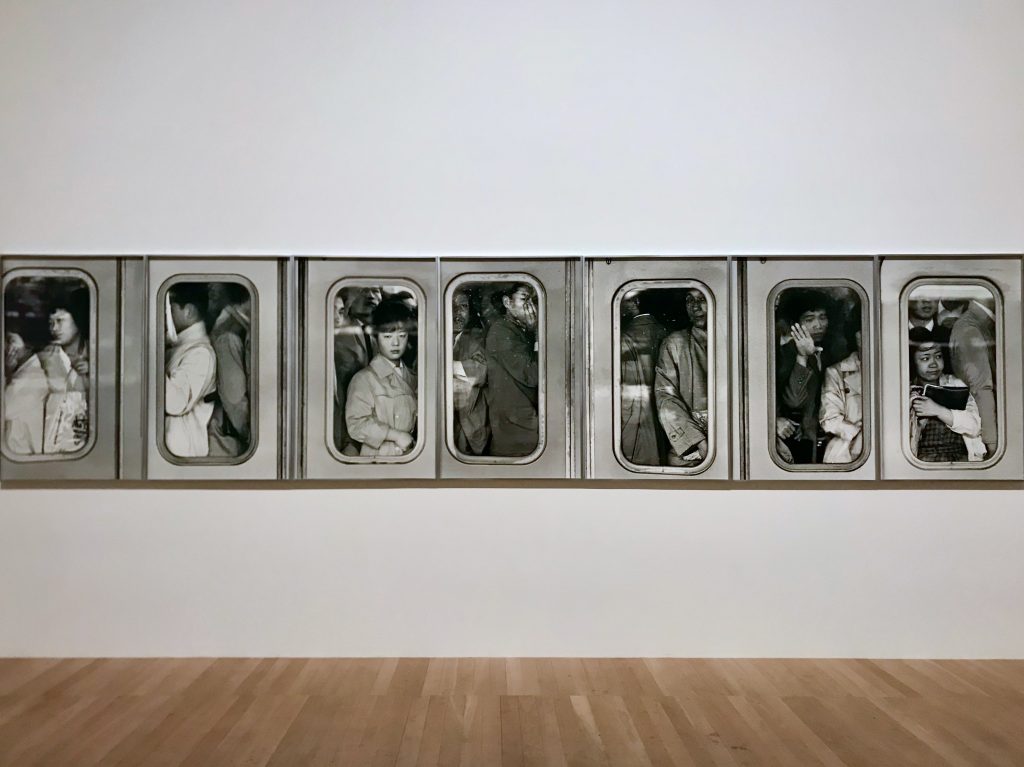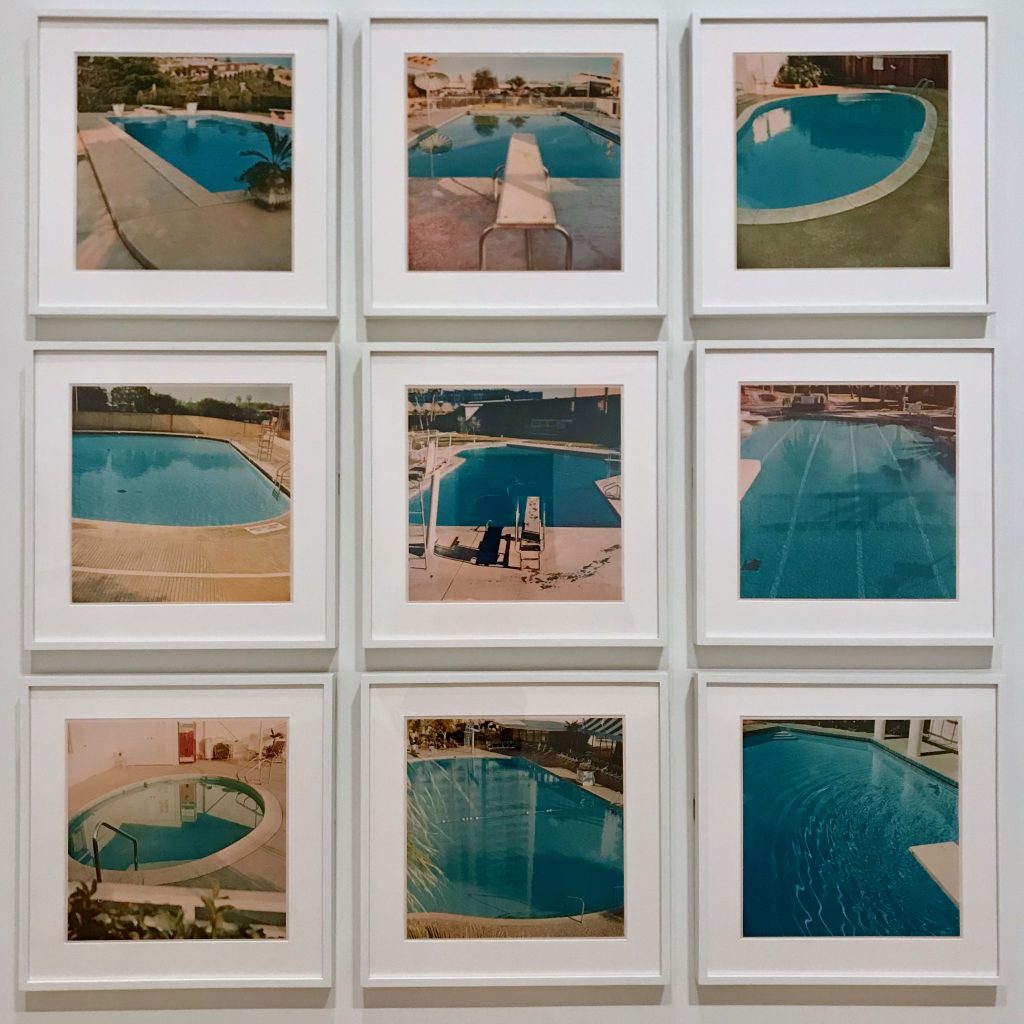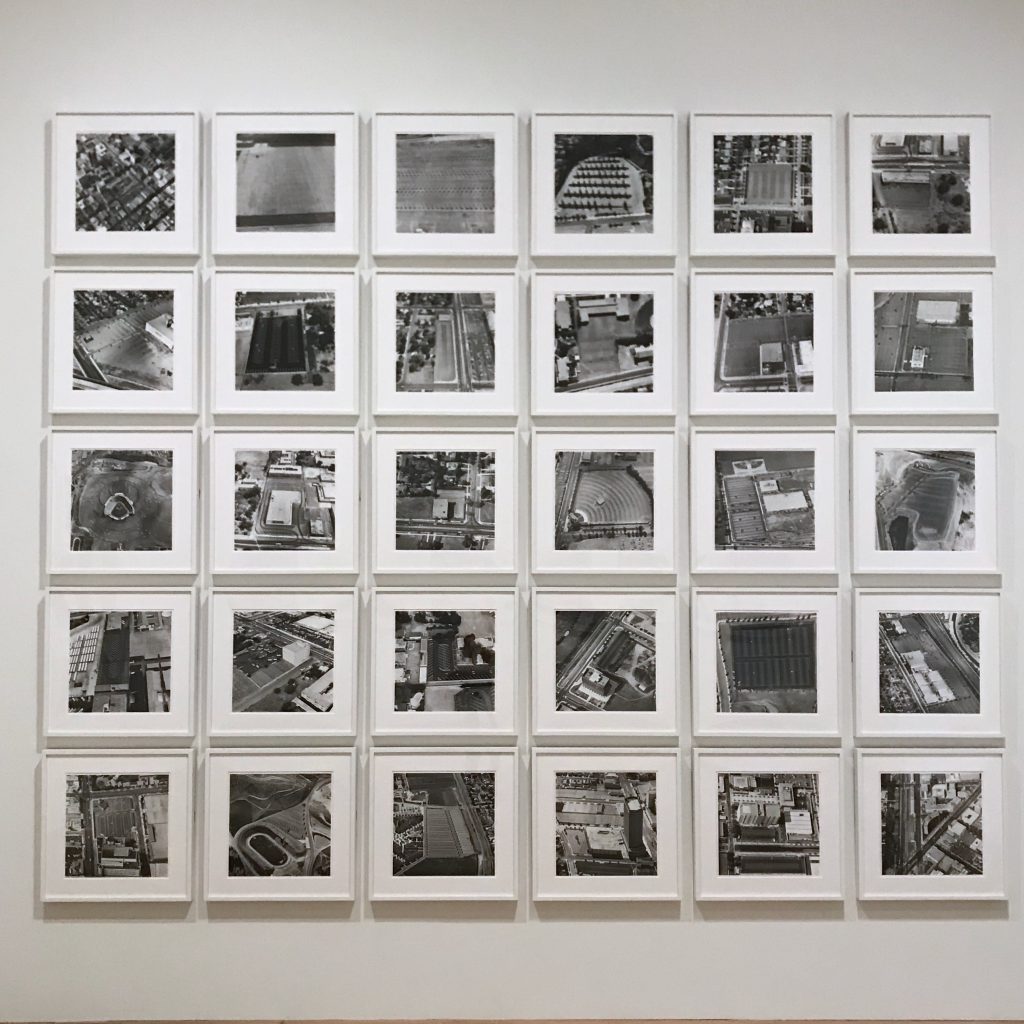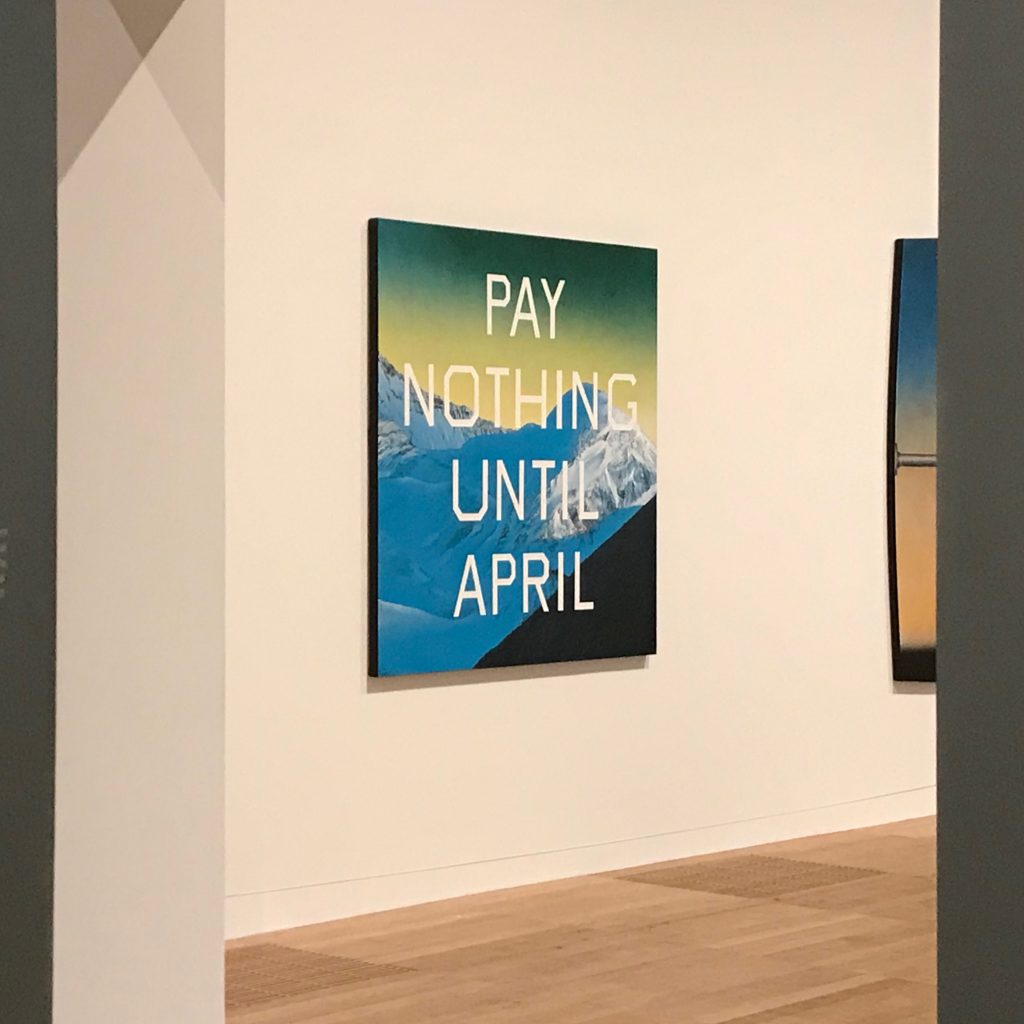My first excursion to a ‘public’ event since lockdown. Booked online for a timed entry (first of the day). Arrived at 9.30 for 10.00 opening and was the only person there (orderly queues started to form shortly afterwards). Most people must have been there for the Warhol or general collection, as I didn’t see one other member of the public in 90 minutes in the galleries I visited (a women with a pushchair walked through the last gallery visited).
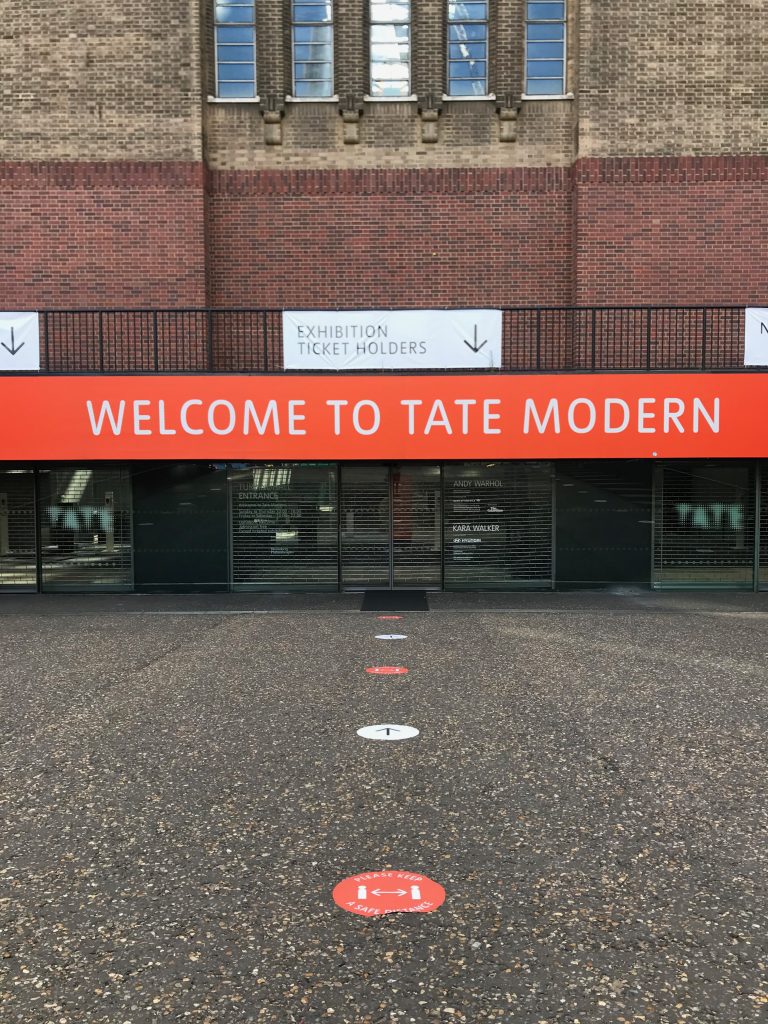
It was great to spend time (alone) in the Ruscha artist room, with lots of familiar work (a whole room of the photography books, for instance; brought back memories of actually being able to handle these at the Art Gallery of New South Wales print room).
Bringing the work into one place reinforces the diversity of form and the singularity of interests in Rushca’s work. One piece that I hadn’t seen before, but particularly liked, was The Final End.
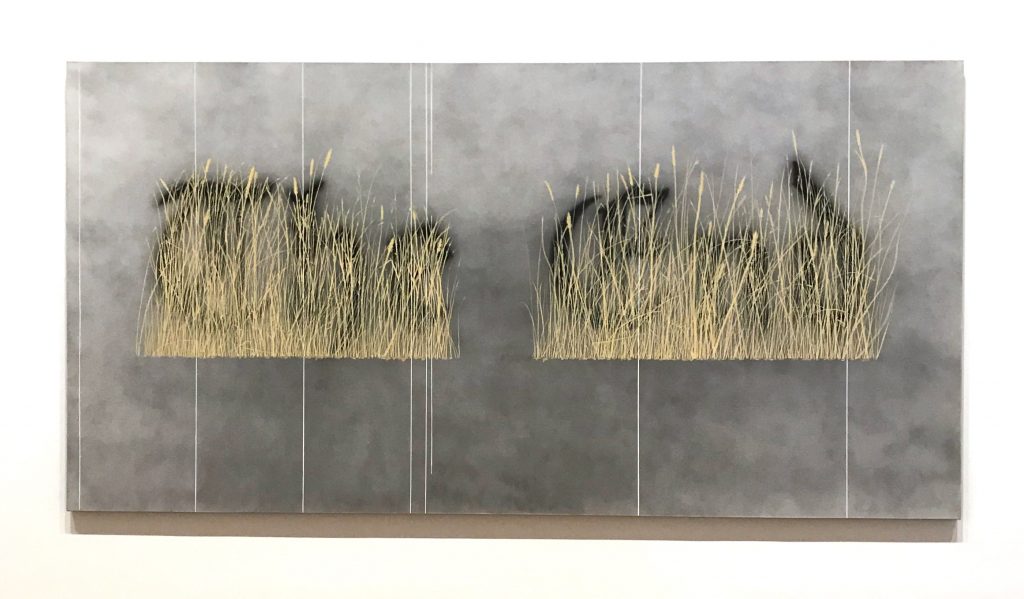
This juxtaposes a filmic Hollywood closing title with the grassy Californian landscape. Whether the film industry marks the end of rural California or the landscape reincorporates and outlasts human activity is left open (the gothic script, invoking early Hollywood, and the celluloid like markings on the canvas, suggest the former).

The sketches overlaying major roads in San Francisco and Los Angeles were also interesting, in creating a conceptual link between two particular places at a moment in time. The roads are abstracted from context and overlaid in a new imagined place

The real delight, though, was unexpectedly being able to see Hatakeyama’s (1995) ‘Maquettes/Light’ series. These are formed from black and white photographs taken at night, with a print on paper and as a transparency overlaid on a light box, increasing the contrast between the blackened structure of the buildings and the brightness of the lights that (fail to) illuminate them.
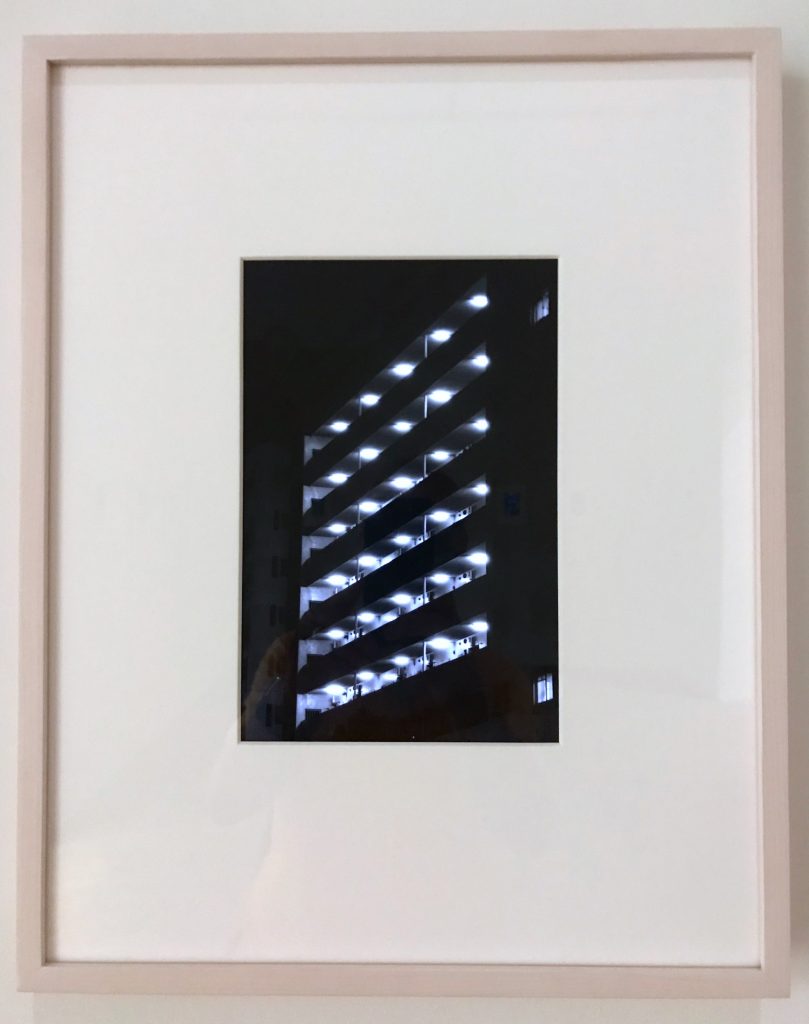
There is an interesting question to address here about scale. These are small pieces that require close inspection, contrasting with Hiro’s (1962) Shinjuku Station , an almost life size image of a crowded metro carriage taking up an entire wall of the neighbouring gallery, and six of Birdhead’s large one off analogue monochrome snapshot-like prints, Welcome to Birdhead World Again, 2011.
